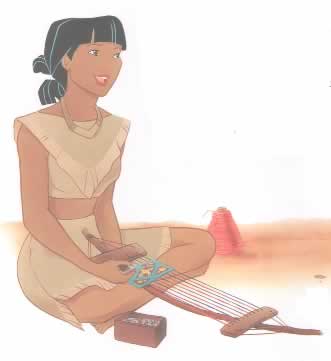|
Once you have all this done you are ready to start doing your
loom work.
How to thread the loom - I use Nymo thread size D
The first thing you need to do is attach the Warp Thread Holders
onto the bow. To do this take a long piece of heavy thread or
piece of thick sinew. Wrap it around the bow once evenly. Then
using the two hole side go from the top of the holder and thread
the sinew or thread down into the hole and bring it back around
towards the bow. Secure the two ends in a knot around the back
side of the bow. Do this to both sides.
Now take a crow bead (med. size bead) and tie it to the end
of a very long piece of thin sinew or your thread. You want to
have it long enough to go through all 10-11 holes.. You are then
going to follow the following pattern to thread the holder:
Bring the thread up into the first hole, go over to the first
hole on the other sides holder and bring it down into that hole.
Now go up into the next hole over and bring it over to the second
hole on the other side. Continue doing this until all the holes
are threaded. If you run short of thread, tie another piece
on the underside of the holder. If you look at the first picture
of this article it shows the threading pattern.
This is the end of this article. In the next article I will
talk about the Box loom and give instruction on how to make one.
|






